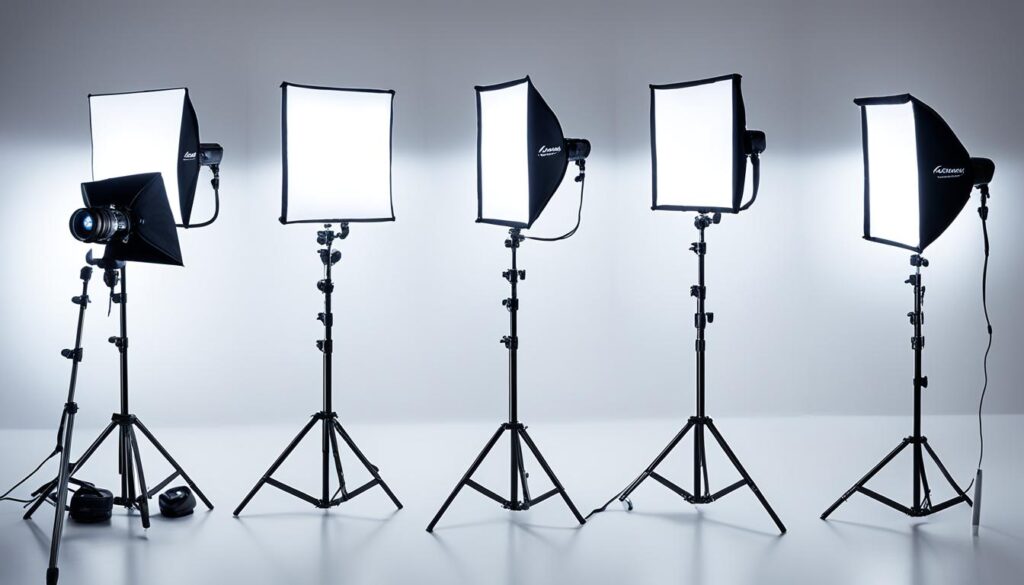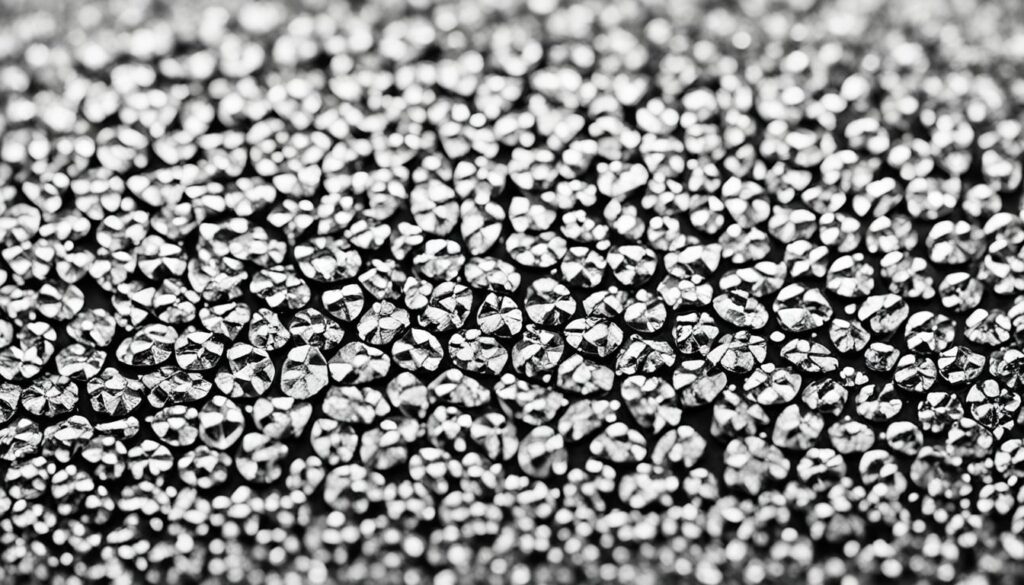7 Tips for Captivating Product Photography for Ecommerce Success

Did you know that your brain processes visuals 60,000 times faster than text?1 This astonishing fact shows the huge impact of great product images on ecommerce success. It tells us why high-quality product photography is crucial to stand out online. About 62% of shoppers say visuals are key in their online shopping choices2. Your ecommerce can’t ignore the importance of stunning product photos.
Imagine showing your products with images that catch the eye and reflect your brand’s style. They tell a story that connects with your customers. Ashley Ashcroft of Six & Stems says one strong image can boost sales1. Sites with amazing product photography have seen more customer interaction and sales increase by up to 40%2.
Entering the world of DIY product photography means understanding different types of shots. From single items to group arrangements or lifestyle pictures, each type highlights your items in a unique way1. Using the right equipment and tools like Adobe Photoshop can raise your product’s perceived value by 30%2. Good product photography is key for anyone in ecommerce, not just the big names.
The Crucial Role of Product Photography in Ecommerce Success
In ecommerce, quality product photos are key. They’re like a visual handshake with shoppers. Most people remember 80% of what they see but only 20% of what they read. This shows how important good visuals are3.
Think about looking at an online store where every product looks amazing. It makes you more confident as a buyer. Good photos get 60% more views and lead to more sales4.
The Impact of Visual Appeal on Consumer Confidence
Being noticed in the crowded ecommerce market means telling a visual story. Showing at least three photos per item helps buyers make decisions. A huge 93% of shoppers say how a product looks is crucial34.
Show photos that highlight the benefits of your products. For example, showing a slim tablet next to a pencil underlines its sleek design. This boosts buyer confidence and pushes them towards making a purchase3.
Investing in High-Quality Images to Set Your Brand Apart
To stand out, high-quality images are a must. Shoppers find top-notch product images very important. Different images for all colors and styles show your brand cares about details4.
Using the right light, a tripod, or the perfect background makes your product shine. A good image can increase sales by up to 30%. Your product’s photo speaks to buyers, winning their hearts and sales34.
Mastering Lighting for Product Photography
If you’re running an e-commerce site, knowing how light affects your products is key. Getting lighting right in product photos can make your items look better. This can help them stand out online. A whopping 75% of online shoppers say photos are key in buying decisions5. So, using soft and directional lighting right is crucial to grab attention.
Understanding Soft vs. Directional Lighting
Soft lighting is great for reducing shadows and making products look good evenly. On the other hand, directional lighting brings out shadows and highlights. It adds depth and detail. This is really good for showing off the small details. You can boost this effect with a RF 100mm f/2.8L Macro IS USM lens for close-ups6.
Lighting Techniques to Highlight Product Features
Softboxes and light tents can give you diffused lighting. This lighting evenly lights up small items. It shows off their quality and fine details7. Experts like Sarah Aagesen say to avoid natural light for product shots. Instead, use photo studio lighting that you can control7. They suggest using lights that give you real-life colors. This helps in making the final product look true to its real colors when editing6.
Tools Worth Investing In: Tripods and Lightboxes
Getting a sturdy tripod is vital. It stops camera shake, giving you clearer and more consistent photos, as Jason Deymonaz points out7. It’s best to shoot in RAW for the best quality. Use a low ISO to keep the noise down. A narrow aperture, like f/5.6 to f/11, is great for depth of field6. A tripod can help make your images sharp and detailed6. Lightboxes are good too. They even out light and give a simple background. This is perfect when switching between lenses, like the RF 24-70mm f/2.8L IS USM for different views6.

Product Photography Composition and Framing
In the world of product photography, creating images that tell a story is key. It’s not enough to just center a product in the frame. You need to use techniques that draw viewers in, guide their eyes, and share a story about what you’re selling. These skills make your product the main attraction, boosting engagement and might increase sales.
Utilizing the Rule of Thirds for Dynamic Images
The rule of thirds is a powerful tool in product photography. Imagine your photo split into nine equal parts by two horizontal and two vertical lines. Place your product where these lines meet or along the lines. This makes your photos dynamic, balanced, and pleasant to view. Such careful framing enhances your product’s appearance and draws attention to key details8. Having your main product take up about 85% of the frame focuses attention on it. This shows how crucial good composition is in product photography8.

Negative Space and Its Role in Composition
Negative space, or the area around your product, is key to a good composition. It creates balance and highlights your product. Using it well can make your image more powerful by sparking emotions. This helps your audience connect with your product8. Adding appropriate models and props can also impact sales. These elements, combined with wise use of negative space, offer real-world context8.
In sum, great product photography needs you to master the rule of thirds and the use of negative space. These methods help create eye-catching photos for your online store. Keep an eye on how your product looks to draw in consumers. Remember, in ecommerce, a photo is more than just a picture—it’s a key tool for getting attention and increasing sales.
Choosing the Right Background and Props
Product photography is more than taking pictures. It’s about showing your product in a way that connects with people. You need to think about the product photography background and props. Together, they focus attention and help tell your product’s story. This makes your image stand out and encourages buyers9.
Clean Backgrounds: Directing Focus Where It Belongs
A clean background is key, especially on big online platforms10. For small spaces, use neutral backdrops like paper or fabric. This helps your product be the main focus11. Choose light backdrops, like white or gray, to meet online store photo rules. A gray backdrop brings out darker products, making them look better10. Natural light is best to show real colors, but indoor lighting is needed for clear photos indoors11.

Using Props Effectively to Convey the Product Story
Props are key in product photography, adding depth to what you’re selling. Pick props that match your product and background. This makes everything look good together11. Props shouldn’t distract from your product. Choose the right size, shape, and color. Materials like textured fabrics and wood add interest to your photos1110. The right props can turn a simple photo into a story, making people more interested on social media9.
In summary, the perfect mix of a product photography background, props, and good lighting can really make your product shine. It’s not just about looking nice, it’s about getting noticed in a crowded market11.
Advanced Product Photography Techniques
Diving into the e-commerce world calls for advanced product photography techniques. Using macro photography and depth of field elevates your visuals. Your product photos will highlight details and look professional online.

Macro lenses reveal the tiny details of your products. A macro lens can show off the fine workmanship of jewelry or leather goods’ stitch detail12. Using a wide aperture, like f/2.8, isolates the product. This keeps the focus on what you are selling12.
Capturing Finer Details with Macro Photography
A 50mm lens and a two-light setup work well for product photos12. These create vibrant, sharp images. Use white or neutral backgrounds for a neat online store look12.
Creating Depth with Controlled Depth of Field
Depth of field mastery is essential for storytelling. Adjust depth to highlight features or set a mood. Use Low-Key lighting for drama or High-Key lighting for brightness12. Reflectors and diffusers improve your lighting. They add depth that makes photos stand out12.
Product Styling: Evoking Emotion Through Imagery
Product styling turns photos into emotional connections. Adding lifestyle elements or textured backgrounds makes products relatable. Emotional photography can turn viewers into buyers12.
After taking photos, post-production is key. Use Adobe Lightroom and Adobe Photoshop for edits. Good retouching brings out textures and colors12. Resizing and formatting ensure fast loading times and compatibility online12.
The Post-Production Process: Editing and Optimization
After you take your product photos with a 50mm lens on DSLR cameras, you are halfway there. Many professional photographers choose this for sharp images7. But, the real skill is in the post-production process. Your pictures, taken from different angles, now need skilled photo editing to stand out.
Color correction is key for showing your products’ true colors online. It makes sure customers get what they expect. Using image optimization techniques makes your images load quickly. This improves the shopping experience on your website.
Color Correction for Product Authenticity
Color correction might seem complex, but it’s crucial for realistic product images. Adjusting shadows and highlights is necessary7. Tools like Adobe Photoshop Lightroom make it easier and more effective.
Retouching: Enhancing Image Quality While Preserving Realism
Retouching is for improving your images while keeping them real. It’s about removing flaws to highlight the product’s best points. The aim is to perfect, not change, achieving a balance through careful editing7.
Ensuring Fast Web Performance with Image Optimization
Image optimization is vital for your online store’s speed—big images slow things down. Lighter images ensure quick page loads. Tools that adjust brightness and more make your photos look great and load fast7.
Lifestyle photos make your website more engaging. They show how products fit into everyday life. Working with models adds dynamism7. This helps customers connect with your products in a more meaningful way.
Product Photography in Practice: Tips from Professionals
Understanding that the human brain sees images super fast can drive you to get really good at product photography. Great product photos aren’t just nice to have; they’re essential for your business13. This guide offers tips from experts to boost your online look.
Realistic Color Representation: The Importance of Accuracy
In ecommerce, how you show your product matters a lot. Showing true colors builds trust and prompts buyers to act13. You might use soft natural light or controlled studio light. Your aim? To capture every little detail of your product13. Here are tips for ecommerce product photography. They highlight the importance of using consistent light and a clear backdrop. This approach keeps the focus on your product’s true colors and design13.
Utilizing a Variety of Product Angles for a 360º View
Showing your product from every angle helps win over customers. It lets shoppers check out the item like they would in-store. This builds trust and can lead to more sales13. You don’t need a fancy setup to get amazing shots. With simple tools and a steady hand, you can take stunning photos right at home13. Every picture should make your store look unified. They should all speak the same style and quality of your brand13.
Try these product photography tips and make the most of the tools you have. Aim for true colors and show off your product from every view. Doing this will meet and even exceed what online shoppers expect13.
Conclusion
Our exploration of product photography wraps up, highlighting your power to capture attention with stunning visuals. We’ve traveled from recognizing the essential role of product images to understanding their impact. High-quality photos are key to building trust and online success. Using equipment like the Canon 5D Mark IV, with 31.26 MP, or the Canon 6D Mark II, which offers a balance of price and quality, is crucial14.
Mastering lighting, composition, and editing turns photos into powerful tools for boosting sales. The Canon 6D Mark II provides a detailed 26.97 MP for showcasing your products14. Even the Canon 6D Mark I, with 20.65 MP, ensures clear and compelling images14. These details matter, helping your e-commerce outshine others and meet high standards.
The value of professional photos is immense, with services like Mirrorless Photo Studio Dubai. The cost is small compared to its return in attracting customers and increasing sales14. Your commitment to product photography sets you apart as a market leader. It unites art, tech, and business, proving essential for success. Excelling in product photography is not optional for e-commerce success; it’s crucial.
FAQ
Why is product photography important for ecommerce?
How does visual appeal affect consumer confidence in product photography?
Why is it important to invest in high-quality images for ecommerce?
What is the difference between soft and directional lighting in product photography?
What are some lighting techniques to enhance the features of products in photography?
What tools should I invest in for better lighting control in product photography?
How can composition and framing enhance product photography?
How important is the choice of background and props in product photography?
What are some advanced techniques in product photography?
What is involved in the post-production process for product photography?
What tips do professionals have for product photography?
Source Links
- https://www.afterpay.com/en-US/for-retailers/access/product-photography/product-photography
- https://www.outerboxdesign.com/web-design-articles/7-tips-for-perfecting-ecommerce-product-photography
- https://www.americommerce.com/how-important-is-product-photography-in-ecommerce
- https://www.mediandesigns.com/the-importance-of-product-photography-in-ecommerce/
- https://www.portfoliobox.net/blog/the-ultimate-diy-product-photography-guide-for-2024-expert-tips
- https://www.canon.com.au/get-inspired/product-photography-tips-and-tricks
- https://www.adobe.com/creativecloud/photography/discover/product-photography.html
- https://www.forbes.com/sites/forbesagencycouncil/2023/03/28/techniques-for-enhancing-your-product-photos/
- https://www.stellendesign.com/product-photography-tips/
- https://www.blendnow.com/blog/product-photography-how-to-choose-the-perfect-background-for-your-products
- https://www.productphotographyideas.com/backgrounds-and-props-tips-choosing-the-right-background-and-props-for-your-shoot
- https://www.lightroom-photoshop-tutorials.com/tips-for-product-photography/
- https://www.upskillist.pro/blog/tips-and-tricks-for-ecommerce-product-photography/
- https://www.powproductphotography.com/blog/best-camera-for-product-photography/
